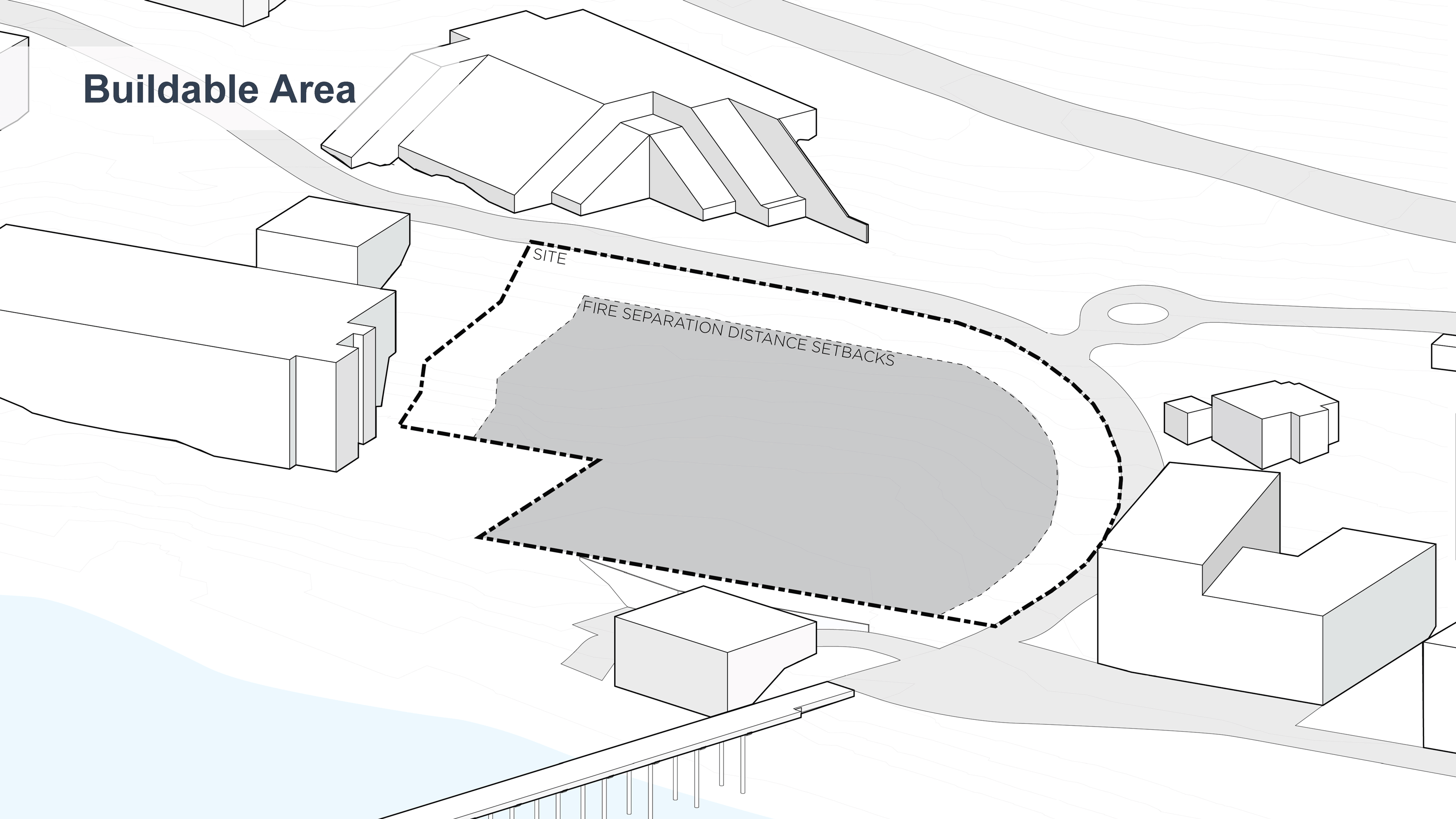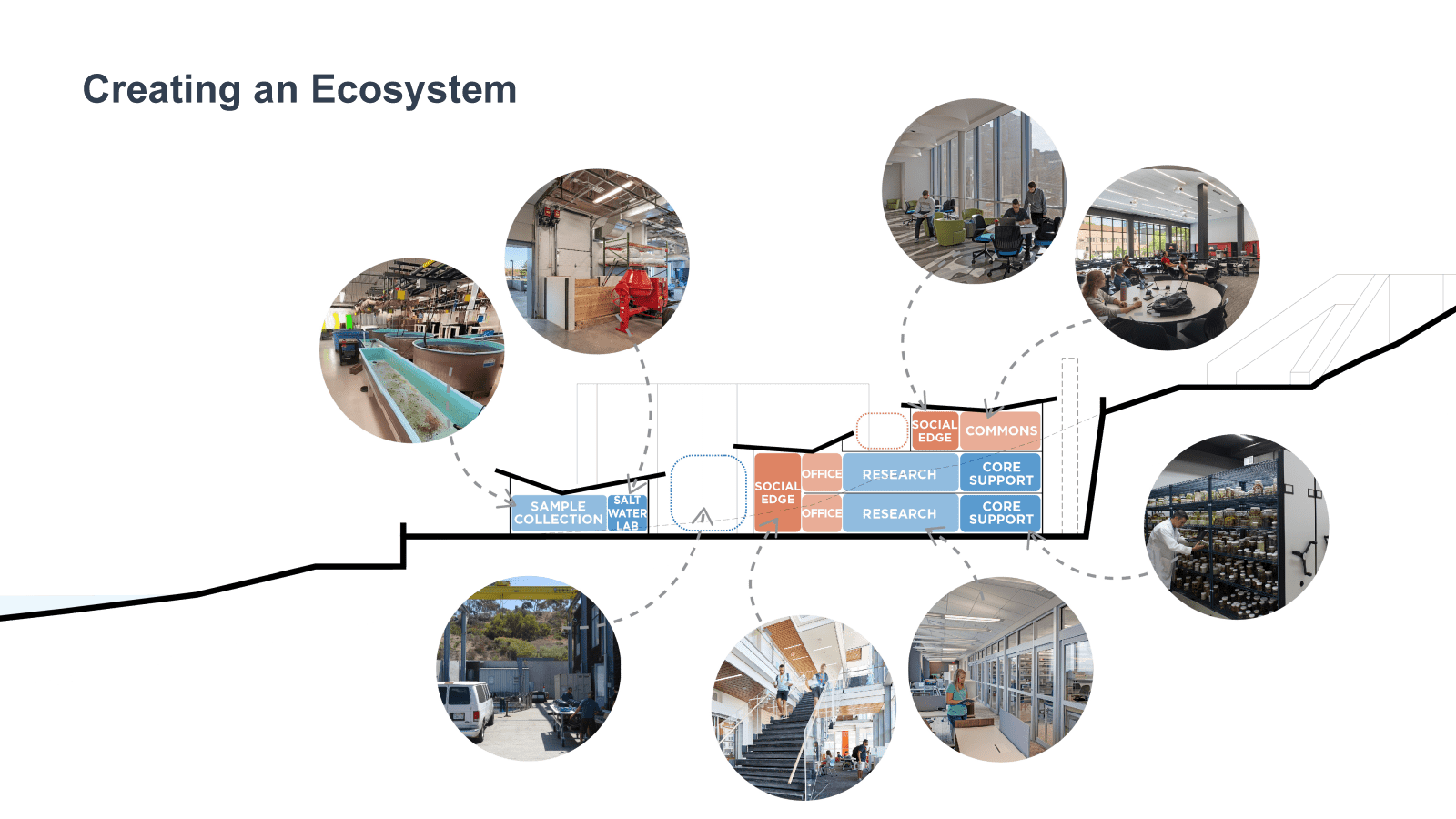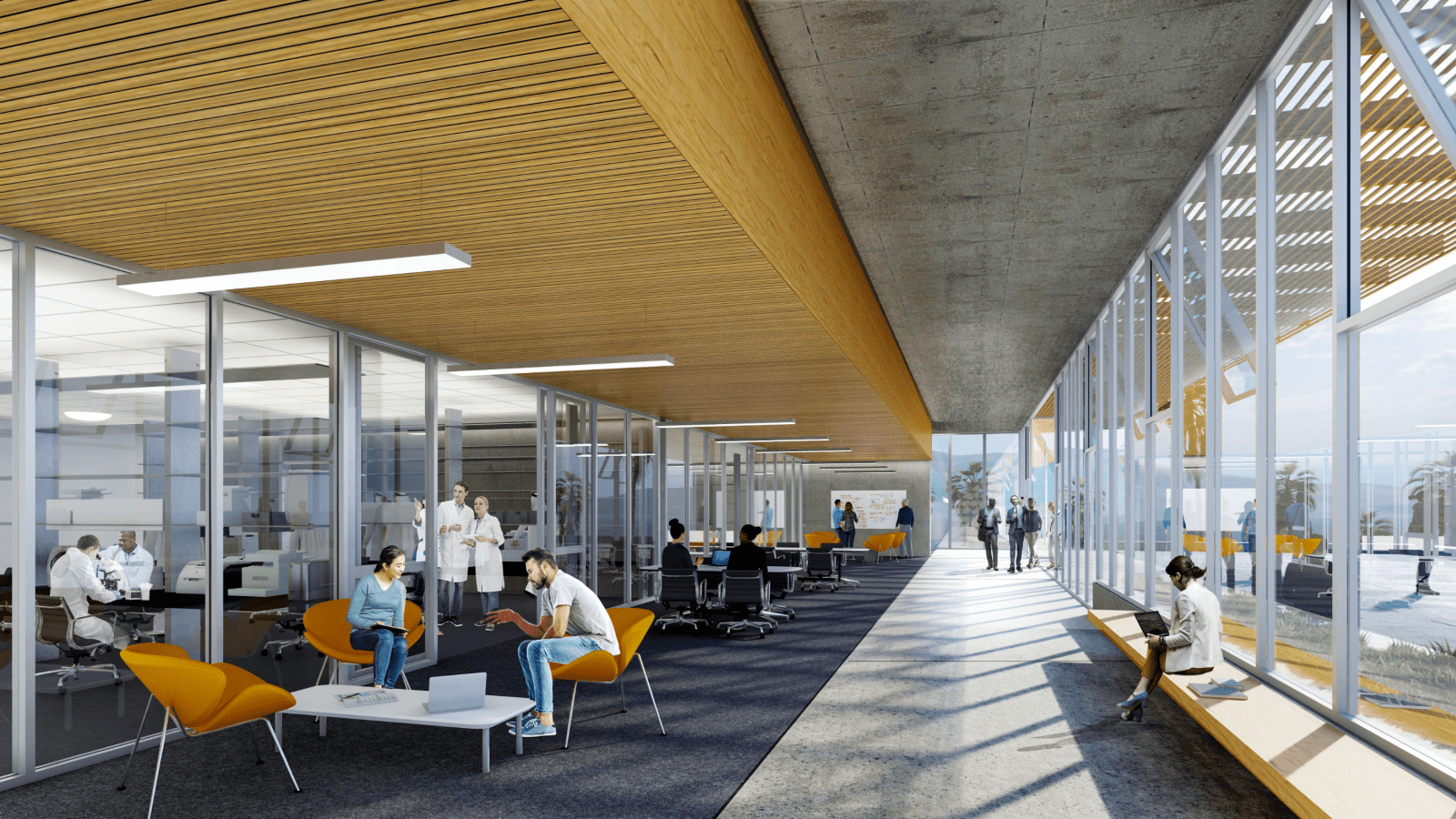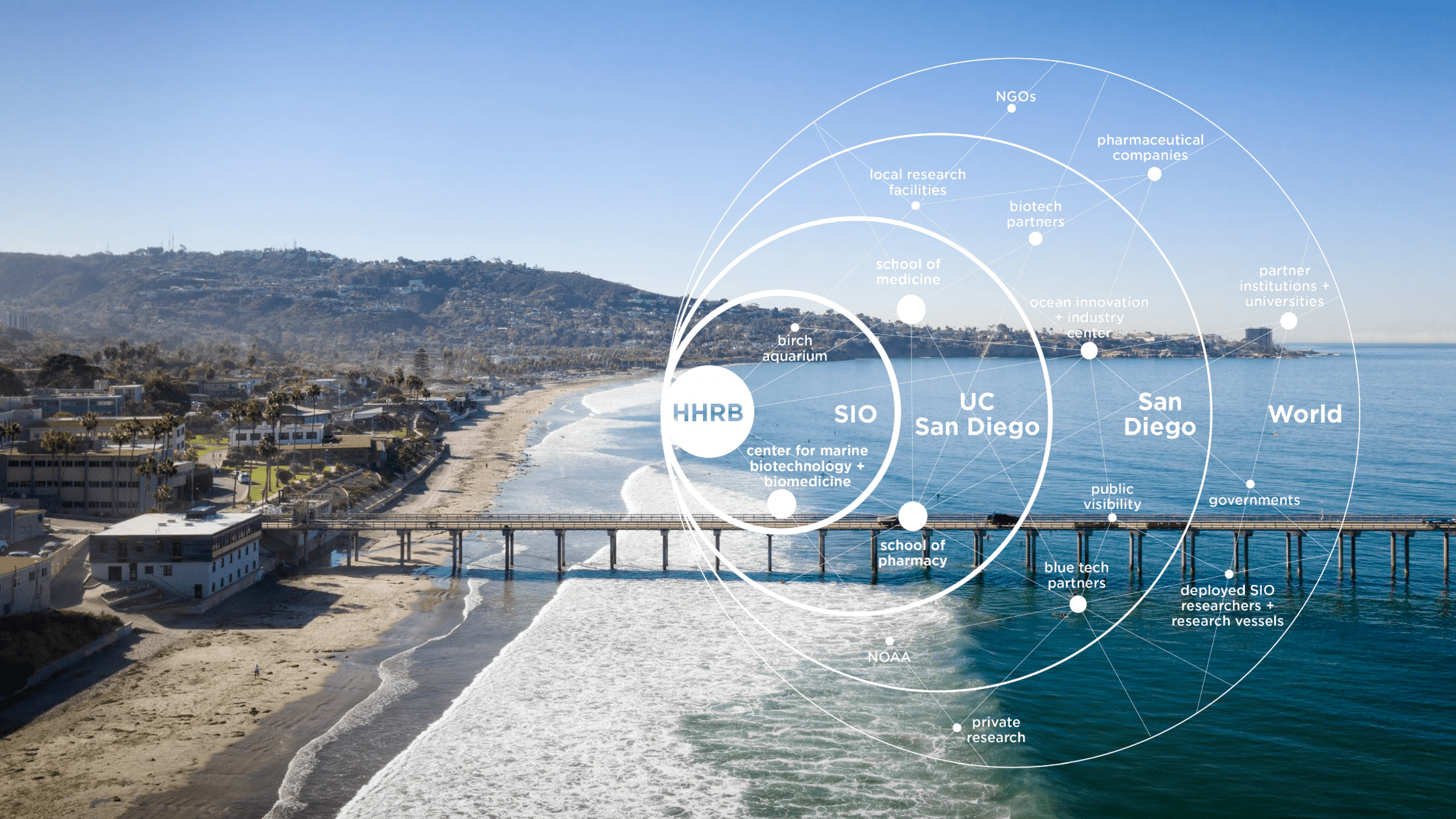Miller Hull
- Portfolio
- Approach
- News
- About
- Connect
Forgoing a large footprint for one that recedes into the earth, this concept explores the potential benefits that come when architecture becomes land.
When Building and Bluff Become One
What if architecture and landscape could not just intersect, but integrate? What if building could become subservient to land, instead of the other way around? What if a lab building with a typically broad footprint could disappear into the earth?
The Scripps Institute of Oceanography is a place unique in its sensitivity to sustainability and ocean preservation. Unparalleled in its beauty, the campus sits just beside the shoreline, overlooking the boundless waters of the Pacific Ocean.


The water, however, remains an intangible for much of the campus, as the steep bluffs prohibit easy access to the beach. In need of pathway infrastructure as much as a new lab building, our team designed a concept that would accomplish both, becoming not only a place where researchers and scientists could effectively work and collaborate, but a means for the campus and public at large to meander from earth to oceanside.
The design focuses on the universality of the building; how those who have no direct academic connection with Scripps can still benefit from its existence. A typical building on this site would no doubt take advantage of the astounding views. Huge windows would overlook the sea, and residents would enjoy sunsets from their desks. But this experience would remain exclusive to those on the inside. As for those on the outside, their views down to the shore would be obscured, and the school would still face a physical disconnect from the very subject central to its study.


This concept ensures that everyone will be able to use the building in some capacity, focusing on three key pillars to ensure it remains multi-functional and widely used: the people — those in the building, on campus, and across town; the place — its topography, campus, and culture; and the impact — the byproduct of people and place creating a destination and legacy that extends far beyond the site.
Designing form around function, this concept solves accessibility issues and addresses functional needs through its shape. It recedes into the bluff, giving labs the low-light interiors they need; and it zig-zags from campus down to the water, its tiered roofs turning into pedestrian paths. Even the mechanical equipment is framed to look like art rather than mere machinery.
Illustrating the possibilities that come when a building listens closely to its surroundings, this design concept for Scripps’ Human Health Research Building shows just how humble and reverential architecture can be.
 ××
××